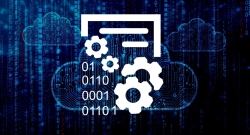Update 04/03/2019: I have completed the FREE course: “Why you need serverless microservices, yesterday!“. Enroll for FREE!
At the moment, I’m working on four online courses in the following order:
“Why You Need Serverless Microservices, Yesterday“, FREE Course

In this course I will walk you through the many benefits of creating serverless microservices instead of the traditional node / instance approach including the use of containers. There are more than enough things to worry about when you want to create a new cloud system or transform a legacy system to operate in the cloud.
From a business point of view, there are huge benefits in going serverless rather than instance based (including containers). A very large jump in business agility can be achieved through focusing on the problems and opportunities rather than the technical jungle of traditional computing solutions.
From a technical point of view, it is almost nirvana where you can eliminate many points of failures in the architecture.
“How To Build An Event Store”, Paid Course

Your event store is the heart of an event sourced system. The event store is the source of truth for all business events. It needs to be able capture and replay all domain events in your system reliably and with great performance.
In this course, I will walk you through building an event store that you can re-use in your own projects. In addition, I will walk you through building a read model that allows you to query domain events from the read model.
I will also go through why building your own event store has many more advantages over using a third-party event store.
We will be building the event store in AWS DynamoDB but you can apply the design to a traditional RDMS SQL storage just as well. I will go over the pros and cons in doing so.
“Architecting And Designing Event Based Microservices”, Paid Course

Learn the details on how to design and architect event based microservices using Domain Driven Design (DDD), Event Storming, CQRS, and EventSourcing techniques. I will show you how best combine many principles, patterns, and techniques to create an architecture with as few points of failures as possible and still deliver a great solution.
What you will learn can be applied to cloud based systems but also to traditional, on-premise systems. The benefits are great in either environments.
Whether you are designing a new system in a greenfield environment or transforming a legacy system, I will show tips & tricks that you can use depending which type of project you are in.
“Implementing A Serverless Microservice in AWS”, Paid Course

Learn the details on how to implement a serverless microservice in AWS using Domain Driven Design (DDD), CQRS, and EventSourcing techniques.
We will build a fully functioning billing system in AWS using Visual Studio and C# .NET Core. Even if you are not familiar with C# and .NET Core, you will learn a lot of practical tips on using the different AWS services including building fully automated CI/CD pipelines.
I’m still working on these courses but I’m planning on publishing “Why You Need Serverless Microservices, Yesterday” and “How To Build An Event Store” first.



